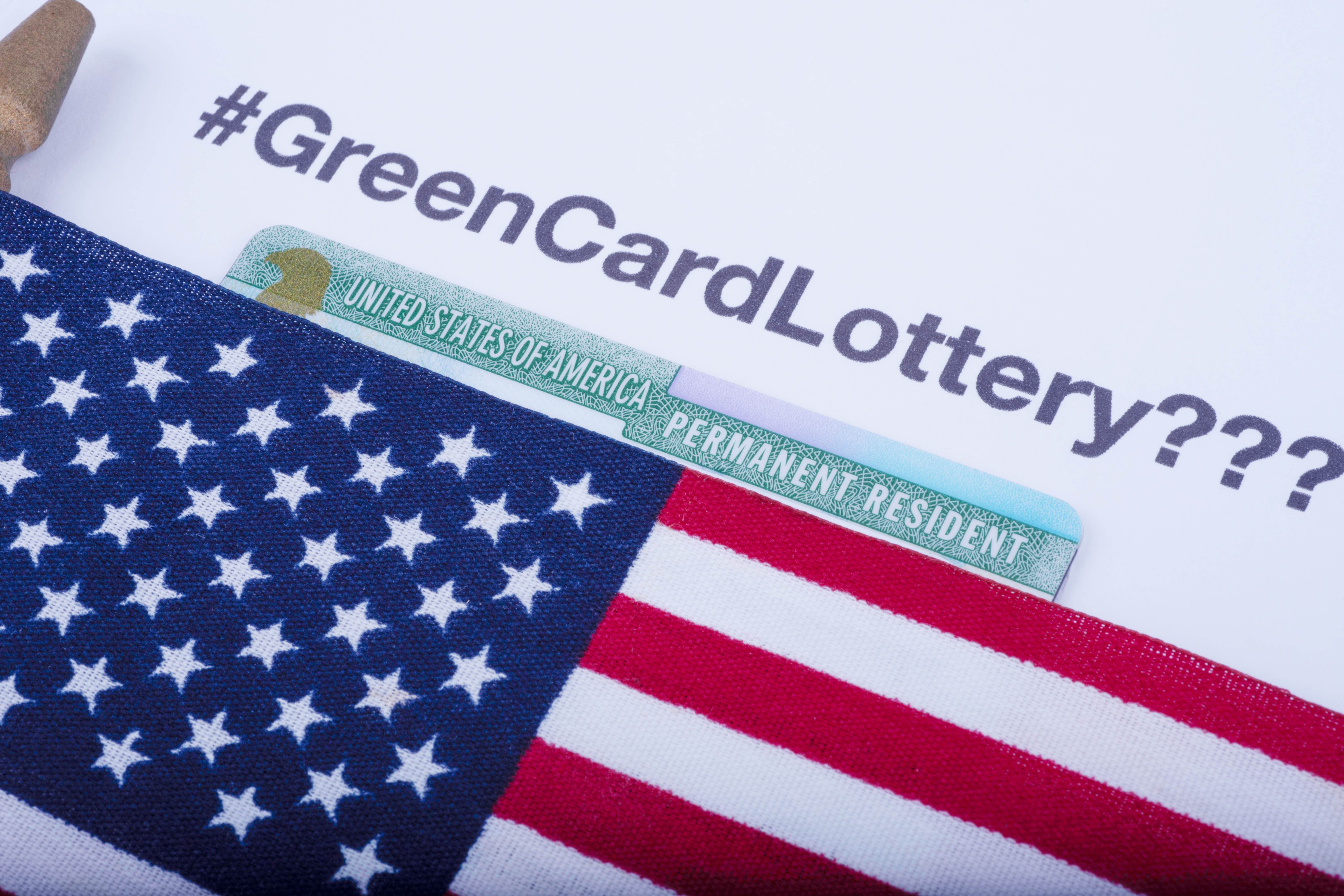Immigration to the United States is a relocation for permanent residence with the purpose of naturalization, to obtain local documents. The residence and legalization in the United States provide access to the labor market with a variety of jobs and decent salaries, make use of modern medical services, conduct profitable business, receive social benefits and allowances. US citizens have visa-free entry to 173 countries and the state itself has a high level of GDP (about 25 trillion USD).
To move to the United States, a foreigner must obtain an immigrant visa and then get a Green Card (residence permit). Immigration-type entry permits are issued if there is one of the following statutory grounds: winning the Green Card, employment, training, family reunification, investment, marriage to an American citizen, and political asylum.
Immigration law in the United States
The procedure for legal relocation of foreigners to the United States is governed by the Immigration and Nationality Act (INA), which was introduced in 1952. The INA is stated in the United States Code (USC), title 8. The law lists requirements for potential immigrants, grounds for moving to the United States, required documents, application processing time, and visa fees.
Reasons for moving to the USA
The migration policy of the USA provides the loyal attitude to foreigners, and mainly is focused on attraction of foreign specialists, investors, reunification of families, restoration of civil rights of natives. The state annually provides quotas for visas, which can be used to legally immigrate to the United States.
List of advantages of moving to the United States:
- High standard of living. The Legatum Institute ranking gives the US the 20th place in the prosperity index of all countries in the world. The country performs best in personal safety and health. The high cost of living in the United States is balanced by a decent income and comprehensive social security.
- Good business prospects. The Wall Street Journal, one of the largest US business magazines, ranks the United States as the 6th best place to do business in 2022. Favorable interest rates on loans, a huge common market with well-thought-out logistics, loyal taxes, international cooperation — all these criteria allow to start a successful business in different areas, from trade to construction.
- Quality education. QS World University Rankings lists five American universities among the world’s top 10, with four of them at the top of the list, including Harvard and Stanford. Students have access to hundreds of diverse programs of study in a variety of fields, including theory and practical training. Applicants with a US degree are primarily seen as future employees in global organizations. Institutions attract students by their technical facilities, modern teaching methods, and individualized attention to each student. Elementary and secondary education in the United States is also at a high level.
- Quality health care. Life expectancy in the United States is about 77-78 years in 2023. The US government invests more than $4 trillion annually in the medical sector. Even provincial clinics in the United States are equipped with modern technology. Medical care is provided through an insurance scheme, which allows you to plan your health investment wisely.
- Natural and ecological recourses. In the United States you can see protected areas and innovative urban developments, deserts and oceans, mountains and forests, a variety of flora and fauna. Domestic tourism in the US is well developed: hotels and motels are everywhere, and good transport connections are available even in the remote provinces. The United States is ranked 24th out of 180 countries according to the Environmental Performance Index (EPI) of Yale University.
- Career opportunities. The country has a low unemployment rate of just 3.7 %, according to the Bureau of Labor Statistics. The average salary in the US in the second quarter of 2022 was 1,041 USD per week, or 54,132 USD per year. Even immigrants without a specialty and with mediocre English language skills can get a job and earn good money as soon as they arrive. US law gives everyone, regardless of their background, a fair path to career development.
There are also many other reasons to move to the United States, such as an interesting historical and architectural heritage, well-developed infrastructure, and low population density (33 people per km2).
We take care of 90% of the process of obtaining a residence permit or starting a business abroad.
.
How to move to the United States
- Choose the appropriate reason for the relocation and the right type of immigrant visa.
- Prepare dossier and, if necessary, translate and apostille certificates.
- Apply for an entry permit and get an invitation for an interview.
- Successfully pass the interview and get approval from the diplomatic representatives to enter the country.
- Receive an entry permit.
- Get ready to travel: check your passport for expiration dates, collect your finances, and decide on a place to stay in the US
- Fly to the United States and apply for a residence permit (Green Card).
Legal ways to immigrate to the United States
To move permanently to the United States, a foreigner must meet one of the conditions:
- win the Green Card lottery;
- plan to establish a family relationship with a local citizen;
- have first-line American relatives;
- invest financially in the state’s economy;
- sign an employment contract with a US organization;
- enroll in a public or private institution of higher education.
Children can become American citizens at birth when they reach the age of majority (age 21). Parents and close relatives will be eligible for a US passport under the family reunification program. The purchase of real estate in the country does not entitle you to a local residence permit.
Green Card Lottery
Every year the US government raffles off up to 50,000 Green Card immigrant visas to foreigners. Immigrants without a criminal record from countries with low rates of immigration to the United States are eligible to participate (a complete list of countries can be found on the website of US Department of State — DOS). The lottery is called the Diversity Immigrant Visa Program (DV Program) and gives participants with all levels of English, high school education and without serious illness the opportunity to legally move to the United States if they win. Also, immigrant visas are drawn among applicants who are already in the country but do not have official papers for permanent residence (for example, live with a non-immigrant visa).
Applications for the Green Card lottery can be submitted each fiscal year within a certain period of time, which changes regularly and is published on the US Department of State website. To participate, you must register on the Electronic Diversity Visa (E-DV) website during the specified period. Only one-time application is available to the applicant: duplicate records are automatically deducted and violators are disqualified. After registering, the applicant receives a unique number by which they can track the status of their application and learn about the outcome of the immigration program.

Winning the lottery does not automatically mean you get a Green Card. If you are successful, you will need to go to an interview at the US diplomatic mission in your country of residence. During the interview, the officials verify the truthfulness of the information submitted in the application, learn about the winner’s plans for moving to the United States, examine the applicant’s file in detail, and make a verdict. To be successful in the interview, applicants must be honest, polite, and demonstrate an interest in immigration and loyalty to the United States.
Labor immigration to America
The United States provides foreigners with immigrant-type work visas that entitle them to local residence permit and legal relocation.
What visa to open for employment while moving to the US
The US government issues Type E immigrant visas to foreigners whose activities are of interest to the United States and who meet the general requirements for entry into the country (no criminal record, goodwill towards the United States, etc.). The average limit of entry permits for each year is 140,000. Spouses and children (under 21 years of age) of immigrants are also eligible.
To obtain a visa, the prospective employer or the applicant’s agent must wait until the Ministry of Labor approves the visa and then submit a I-140 petition for the prospective employee. In some cases, the petition may be submitted directly by the foreign national. If the petition is approved, the immigrant completes the DS-260 visa application, pays a fee of USD 345 and covers the additional services (translations, vaccinations), a medical checkup, and an interview. Upon arrival in the USA, the immigrant is eligible to receive a Green Card.
There are four categories of work visas which allow immigration to the United States for permanent residence.
E1 visa: priority worker and persons of outstanding talents
The most extensive category in terms of the number of permits issued. The minimum processing fee is 345 USD for the I-140 petition and 220 USD for the DS-260 form. The E1 document is available for:
- Immigrants who have outstanding talents in science, art, education, business or sports. Achievements in a particular field must be supported by national or international recognition, as well as appropriate documentation. To obtain a visa, the immigrant must prove an intention to enter the United States in order to continue working in an area of outstanding ability and, in the long term, bring significant benefit to the American state.
- Prominent professors and researchers who have three or more years of teaching or related academic experience and internationally recognized achievements. Applicants can obtain a US visa to complete an internship, take a full-time position in their field at a university or similar institution, or participate in research activities.
- International executives and managers who have held a leadership position for 12 months or more in the last three years with a company (branch, affiliate) registered in the United States and plan to relocate to the USA, retaining the relevant position with the same employer or its subsidiary.
E2 visa: specialists with higher education and persons with exceptional abilities
The E2 visa covers 28.6% of the annual worldwide limit of work-related entry permits. There are two subgroups in this category:
- foreigners who are representatives of professions with academic degrees, or who have a bachelor’s degree and at least 5 years of professional experience in their chosen field;
- persons with exceptional abilities (for example, above-average knowledge) in the sciences, arts, or business.
The E2 visa applicant must have made a significant contribution to the national economy, cultural or educational interests, or the welfare of the United States. In most cases applicants must have a labor certification approved by the local Ministry of Labor. The minimum processing fee is a consular fee of USD 345 for the I-140 petition and USD 220 for the DS-260 form.
E3 visa: skilled workers, professionals, and non-skilled employees
This entry permit may be applied for by individuals who have at least two years of experience or training in the declared field and plan to perform seasonal, permanent, or temporary work in the United States, as long as there is a shortage of appropriate local workers in the state. It may also be possible to open visas for applicants who wish to do unskilled labor because of the shortage of such workers in the US population. E3 visa represents 28.6% of the world’s annual limit of work entry permits. The minimum processing fee is 345 USD for an I-140 petition and 220 USD for a DS-260 form.
E4 visa: certain special applicants
7.1% of the working immigration-type entry permits are issued to certain categories of foreigners listed on the US Department of State website. These may include internationally accredited journalists, religious leaders, former government employees, and foreign medical graduates. The applicant must be a beneficiary of an approved I-360 petition. The minimum processing fee is 205 USD for the I-140 petition and 220 USD for the DS-260 form.
How to find jobs with relocation to the USA
To find a job in the United States, foreigners can visit specialized websites, contact employers directly, use the services of a recruiting agency, or request a job transfer to a foreign branch of a company.
The most common way to find employment in the United States is to search for the right vacancy online. Publications on online resources are available to every Internet user for free. Jobs are usually posted directly by employers, which allows you to contact a person interested in an employee immediately and send a resume. The disadvantage of this approach is the high competition: the sites are monitored daily by thousands of job seekers who want to move to the United States for permanent residence.
Popular resources for job searching in the United States include:
- angel.co;
- careerbuilder.com;
- careerjet.com;
- linkedin.com.
For highly specialized inquiries there are resources such as careercast.com, usa-jobs.co (for medical professionals), alaskajobfinder.com (for those wishing to immigrate to Alaska).
Recruiting agencies help foreigners find suitable jobs in the United States. Chances of getting a position in this case increase: specialists help with compiling a dossier, select relevant offers, based on their experience, give advice on how to pass the interview. All you need to do is submit your resume and decide on the desired field of work and place of residence in the United States of America.

The disadvantage of going to a recruiting agency is the financial cost of the help of middlemen in the field of labor immigration. To get quality services in the search for a job, it is worth entrusting this process to proven agencies with a long reputation and good reviews on the Internet, for example:
- Artisan Talent;
- Atrium Group;
- Cornerstone;
- Creative Circle;
- Spherion;
- Insight Global.
Independent job search with relocation to the USA directly via employers is relevant for those who know what company they want to work for. For instance, Google regularly publishes open information about job vacancies, which allows any Internet user to fill out an application form, take a test assignment and attach a resume, and then wait for feedback. A transfer to a foreign affiliate would be suitable for employees of international companies with a presence in the United States, who are well respected in their workplace and whose activities may be of interest to the United States.
Business immigration
Moving to the United States is possible for people who are ready to invest in an existing business in the United States or want to start their own promising enterprise.
How to obtain a business visa
The United States of America offers a special visa, EB-5, for business immigration. This type of entry permit represents up to 7.1% of all immigration documents issued worldwide. To obtain a visa, a foreigner must participate in a business activity that will benefit the US economy by providing jobs and capital investment.
The minimum investment amount for the EB-5 program is:
- 1,050,000 USD in general;
- 800,000 USD for targeted employment areas.
There are two ways to invest in the American economy in order to open an entry permit:
- independently into an existing business in the United States;
- via regional centers, whose task is to improve the economic situation of a particular state.
Besides investing the designated amount, the foreign national must create and maintain full-time employment for a minimum of ten American citizens, not including employees from the applicant’s family, for the next two years.
The EB-5 visa is divided into several categories:
- job creation in general — C5; in a targeted rural or high unemployment area — T5;
- pilot program for investors with no location requirements — R5; in the target area — I5.
Immigrant investor visas are issued in the chronological order in which applications are submitted until the annual numerical limit for the category is reached. To obtain the document, the foreigner completes the I-526 petition (3,675 USD), upon approval, applies for the DS-260 entry permit (220 USD), and after arrival to the United States, receives a conditional Green Card for two years. The spouse and children under the age of 21 may apply for an immigrant visa along with the businessperson.
Requirements for visa renewal
If the investment is still viable for the US economy after 24 months, the applicant can get a permanent Green Card. Additional requirements for the applicant are no legal problems and a permanent stay in the country (it is possible to leave the United States for no more than 6 consecutive months). In order to get the American permanent residence permit the foreigner submits I-829 petition about the change of status 3 months prior to the expiration of the conditional Green Card and provides the documents confirming the successful business and compliance with the criteria established by the law. The request is considered from 6 to 8 months. If approved, the applicant receives a permanent residence permit for 10 years.
Relocation to the USA to study
Immigrants can move to the United States by enrolling in local educational institutions. You can apply for an F-1 or M-1 student visa if you meet the following requirements:
- are enrolled full-time in a university, college, school, vocational school, language training institution, or other institution approved by the Student and Exchange Visitor Program (SEVP), Immigration and Customs Enforcement (ICE);
- have knowledge of the English language or are registered in an appropriate course;
- have sufficient funds to be self-supporting;
- do not intend to give up your place of residence abroad.
F-1 visa holders may only work within campus in their first year and then outside the campus if the position obtained is related to their field of study and is approved by an authorized representative of the educational institution. Practical activity for M-1 visa holders is possible only after graduation.
Obtaining an entry permit
Immigration for students begins with opening an F-1 or M-1 visa:
- F-1 is for full-time students attending an accredited college, university, seminary, conservatory, academic high school or elementary school, other educational institution, or a language training program.
- M-1 includes foreigners enrolled in vocational or other non-academic programs (e.g., continuing education courses).
To open a visa, the applicant must be enrolled at an SEVP-approved educational institution and receive a confirmation in the form of I-20. With this document and dossier, the individual applies for an entry permit at a US diplomatic mission. The foreigner’s family members (spouse and minor children) can also apply for the visa. Basic fees include $160 for the DS-160 form and $80-220 for entering the Student and Exchange Visitor Information System — SEVIS.
Legal residence in the United States after studying
Student visas in the United States belong to the non-immigrant type, and do not grant residence permit or permanent residence permit. To stay legally in the United States after graduation, a foreigner must change status to another category, such as being officially employed or married to a local citizen. Immigrants do not need to leave the country; they can apply for it via the United States Citizenship and Immigration Services (USCIS).
Marriage to an American citizen
A foreigner may legally come to the United States to marry an American. Both members of the future union must be eligible for marriage under the laws of the state where the registration will take place, at the time of submission and thereafter (in particular, not being legally married to other people). Prospective spouses must have met in person at least once within the past 2 years, except in special circumstances, such as when visits are extremely difficult for an American citizen or conflict with the culture of the bride or groom.
The relocation begins when the American resident submits an authorized petition (form I-129F) for the future spouse of foreign nationality. Once the petition is approved, it is forwarded to the appropriate diplomatic mission in the bride or groom’s country of residence. The next step is for the foreign national to apply for a non-immigrant K-1 visa. The applicant prepares a dossier, pays the visa fees, and waits for an interview invitation.

During the interview process, representatives of the US diplomatic mission must verify the reality of the relationship between the future spouses. Authorized representatives ask to see documents showing personal meetings (e.g., plane tickets, photos of the couple together, hotel reservations), ask questions about where they have met, future plans, etc. Applicants must also prove their financial security, for example, by using a form I-134, in which the US citizen expresses the intention to support their future spouse. A visa may be denied if the planned marriage is suspected to be a sham.
If the foreigner successfully passes the interview, they will obtain a K-1 visa with which they must come to the United States and marry the designated individual within 90 days after arrival. When the relationship is registered, the individual may apply to the Department of Homeland Security (DHS), United States Citizenship and Immigration Services (USCIS), for a change of lawful permanent resident (LPR). Unmarried minor children may move with the immigrant. They will need a separate K-2 visa.
Family reunification
Moving to America for permanent residence is possible for foreigners who have immediate family members who are legal residents of the United States. The host party must submit a form I-130 to USCIS as well as an affidavit of support (form I-864), agreeing to sponsor the immigrant. Upon arrival, the immigrant is eligible to receive a local Green Card of the permanent type.
Citizens of the United States can petition for an immigrant visa for:
- Immediate family members. This includes legal spouses, unmarried children under the age of 21, and parents (if the applicant has reached the age of majority). Visas are available for family members of US citizens with no limit on the number each fiscal year.
- Other persons according to preference categories. Priority is given in descending order to the following relatives: unmarried children over 21, married adult daughters and sons, and siblings. Visas issued for these categories are subject to annual numerical limits and are available to applicants on a case-by-case basis according to priority date.
Holders of a permanent Green Card in the United States can only petition for family reunification for legal spouses and unmarried children (including adult ones).
Political asylum
Refugee status in the United States is available for foreigners who are already physically present in the United States and are not local citizens. Officers consider applications from people who have been forced to leave their country of residence because of persecution due to race, religion, nationality, political opinion, or membership in a particular social group.
The applicant must complete form I-589 within 12 months after arrival in the United States and wait for the USCIS decision. If the application is approved, the individual is granted asylum and, after one year of residence in the United States, is eligible for permanent residence permit. Applicants may also petition for removal of their spouse and children (minor and unmarried) to the United States by filing form I-730. There is no fee for granting political asylum.
Relocation by a tourist visa
There is no way to move to the United States on a tourist visa for permanent residence. To stay in the USA legally, a foreigner can find a valid reason to immigrate during the trip, for example, by finding an employer who is willing to hire the applicant and issue a Green Card for them.
How a family with a child can immigrate to the United States
Most immigrant visas allow families to immigrate legally to the United States with unmarried children under the age of 21. Children under the age of 14 are not normally interviewed, but they are required to gather the appropriate package of documents, undergo a medical examination, and receive immunizations if necessary. In some cases, a special visa, for example, K2, can be obtained for the child. After relocation, school-age children must attend an educational institution. Each child must have health insurance.
Consequences of illegal immigration
Section 8 USC § 1325/1326, Illegal Entry, treats illegal crossings of the US border as a violation of the law. The rule applies to those who evade required inspections, enter the US through other than established border control points (for example, through Mexico avoiding border patrol), or intentionally submit false information to customs. The first violation is punishable by a fine of 50-250 USD, imprisonment for up to six months, or both.
Re-entry, or presence in the United States after deportation or expulsion, may result in a two-year arrest and double the penalties. Moving to the United States with a Green Card via a sham marriage could result in up to five years in prison and/or a fine of up to $250,000 (both are not mutually exclusive). Similar penalties apply to fraudulent immigration-related businesses.
How much money does a person need to move to the United States?
Regardless of the reason of relocation to the United States of America, a foreigner must have financial resources, which are able to ensure living in the country without applying for social support (except for refugees). The amount of the savings depends on the law of the particular region of the United States, but it cannot be less than the minimum salary for each month of stay in the country. For 2023, the starting salary rate in the US is $7.25 per hour, which is about $15,000 for a standard eight-hour, five-day schedule.
The exact amount required for a successful relocation to the USA depends on the migrant’s country of residence and the city where they plan to stay, as well as their personal needs. The table below shows calculations based on the example of a foreigner who intends to move to New York for permanent residence.
| Expense item | Approximate amount, $ |
|---|---|
| Immigration fee DS-260 | 220 |
| Flight | 500−800 |
| Rent of 1-bedroom apartment per month | 3000 |
| Monthly transport pass | 130 |
| Utility bills per month | 2000 |
| Private kindergarten per month | 2200 |
In addition, an immigrant may need to pay for medical examinations, vaccinations, notary services, and document translations. The estimated monthly cost per person in New York City is 1,438.3 USD, not including rent and utilities.
The best states to move to in the US
Regions of the United States differ greatly in living standards and environmental conditions. The most attractive US states and cities for immigrants:
- California. A multicultural state with many immigrants, including many former residents of the Soviet Union. California attracts with its warm climate and stable economic situation. Here is the famous Stanford University, and the average salary reaches 50,000-60,000 USD per year. The only drawback is the high cost of living (estimated costs per month without housing are around 1500 USD) and real estate, especially in densely populated Los Angeles or San Francisco.
- New York. The capital of the state is the city of the same name, with a high standard of living (average salary is 72,000 USD per year with expenses starting at 18,000 USD) and good job prospects. About 23% of foreigners live here, and more than 800 world languages can be heard around.
- Texas. The second largest state in the USA after Alaska is mostly attracting farmers, fishermen, cattlemen and livestock breeders. In Texas there is no personal income tax, which makes it easy and profitable to open business, there is cheap real estate. Among the disadvantages we can mention the average level of salaries (about 24,000 USD a year with expenses from 10,000 USD) and education compared to other regions of the state.
- Florida. A great place for immigrants who dream of living next to the ocean. Florida has cheaper apartments than California, no VAT, which is convenient for businessmen, developed infrastructure and tourist attractions. The main city, Miami, is densely populated by immigrants from the former Soviet Union. The downsides include a limited number of jobs for skilled workers (e.g., in IT or the economy). The average yearly salary is 50,000 USD and you can expect to spend 14,000 USD a year not including housing.
- Washington. An economically developed state where foreigners with working immigrant visas are most likely to move. Washington is home to the main offices of the top corporations such as Microsoft, Starbucks and Amazon, as well as Google and even Boeing. The high level of salaries (the average figure is 70,000 USD per year) makes real estate and life in general expensive (estimated costs excluding housing are 15,000 USD).
The pros and cons of moving to each of the states depend on the immigrant’s future plans, social status, financial situation, and other aspects.
Still have questions?
Ask our experts about business relocation or residency in the USA for free

Reviews of those who moved to the United States permanently
Online comments show that most immigrants are happy with their relocation and do not want to return to their home country, and plan to stay in the United States for many years. The feedback from newcomers emphasizes the diversity of jobs in the United States, excellent health care, easy-to-use English, civil rights, and comprehensive government assistance. Immigrants are pleased with American life because there is a high level of salaries; even with an average salary a person can afford a good meal, an annual vacation, and a personal car.
The only thing immigrants are dissatisfied with is the process of moving. It is very difficult to get a visa of the appropriate type if the applicant has no relatives from the United States or a local fiancée/fiancé. Winning the Green Card lottery is pure luck, which few foreigners face. Employment in American companies is a troublesome and time-consuming process, which usually is avoided only by true professionals of narrow specialization with excellent knowledge of English. The annual number of quotas for immigrant visas is limited, so applicants can wait their turn for years.
Assistance in immigration and relocation to the US
To move to the US legally without much effort, you can use the services of migration specialists. Experienced lawyers select the best way for immigration, depending on the situation, requests, family ties and financial capabilities of the applicant. Specialists independently collect the required documents, send applications to various authorities, help prepare for the interview, and, if necessary, accompany the client to the interview. The customers only need to follow the lawyer’s instructions and provide truthful information about themselves.
In addition to migration specialists, other companies also provide assistance in moving to the United States. For example, employment organizations select the appropriate job in the US, based on the education and experience of the applicant, and language centers conduct language courses for students with different levels (from A1 to C2). For a favorable move a foreigner can use the aggregator site to find cheap airline tickets. For initial accommodation and adaptation in an unfamiliar country, immigrants use couch surfing services (inviting guests without money) or find housing offers on Airbnb and similar domains.



















Hello! My name’s Makara I come from Cambodia. Now a day I living and working in Cambodia, I’m really wanna live , working in the USA. I want to change my life and all everthing. So I hope that one day I live and work in my dream beautiful country. Dear, my lover Khmer and U.S.A people and if you need labor force please kind to me I will do it for you .
Hello Makara!
Moving to the United States has always been quite difficult — and under the current U.S. immigration administration, it’s become even more complex to obtain a work visa or residence permit.
However, there are simpler and faster programs for relocation to other countries — for example, residence permits in Spain, Portugal, or the UAE, which can often be obtained through investment, business registration, or remote work.
If your main goal is to start a new life abroad, it may be worth exploring these easier and more realistic options first.
I wish to study as a registered in USA. I would love to study in IVYTECH Indiana university but I have no idea on how to begin. Pls I need help. Thank you
To study and become a registered nurse in the USA, you’ll need to start with a student visa (F-1) and apply directly to your chosen school — in your case, Ivy Tech Community College (Indiana).
Prepare academic transcripts, English proficiency test results (IELTS/TOEFL), and proof of funds.
Once accepted, the college will issue a Form I-20 — this is what you’ll use to apply for an F-1 student visa at the U.S. embassy.
Later, after studying, you may be eligible for practical training (OPT) to work temporarily in the U.S. nursing field.
Hello my name is ASO my biggest dream is to come to America and live there I want my dream to come true. Please help me I live in Iraq.
Hello Aso!
Moving to the United States is, unfortunately, very difficult — immigration there is tightly regulated, and most programs have strict eligibility criteria or long waiting times.
If your goal is simply to start a new life abroad, it may be more realistic to consider other countries with easier residence programs, such as Spain, Portugal, or the UAE, where relocation and residence permits are faster and more accessible.
Hello! Now I live in Sweden like migrant. I am not Swedish citizen but I have permanent residence permit in Sweden so I have to move to my brother in USA so how can help me?
Can you help me? I want to go to work and live in your country?
Great article. Very informative